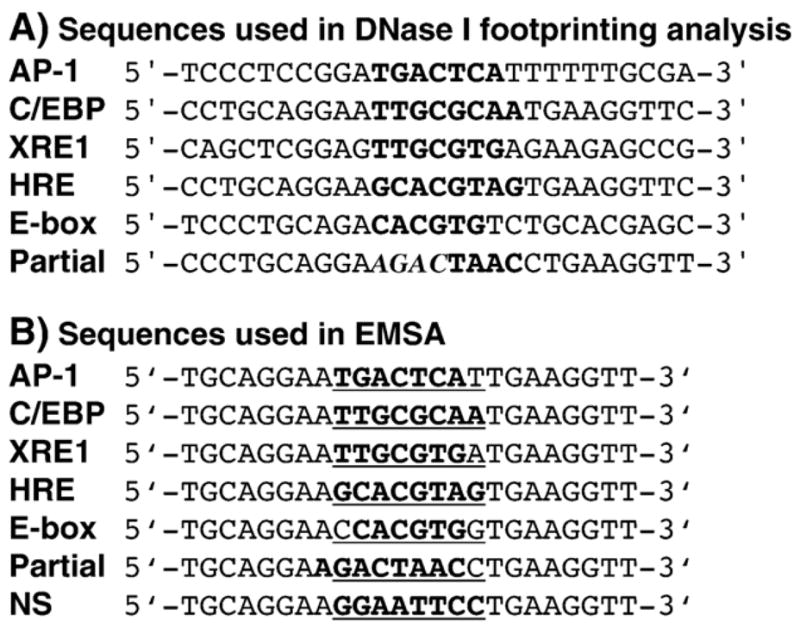Fig. 2.

(A) Sequences of the DNA sites used in DNase I footprinting studies. All sequences are duplexes. Core target sequences are in bold. The Partial site actually contains a weak half site, 5′-AGAC-3′, which is italicized, and the full Partial site is in bold. The 3′ and 5′ flanking sequences surrounding the AP-1 and XRE1 target sites are from the his3 and CYP1A1 promoter regions, respectively. Flanking sequences surrounding C/EBP, HRE, and the Partial site are the same as those for EMSA (discussed below). For E-box, the flanking sequences are the same as those used by Agre, Johnson, and McKnight in their work on C/EBP bZIP [10]. (B) Sequences of DNA sites used in EMSA studies. All sequences are 24-mer duplexes. Each duplex contains a core target site surrounded by the same 3′ and 5′ flanking sequences, which were chosen to minimize DNA secondary structure. The core target sequences are in bold. The inserts between flanking sequences are underlined; note that for the Partial site, the actual target is shifted by one base pair. The NS sequence is a nonspecific DNA control. The two thymines at the 3-end of each duplex were P32-labeled.
